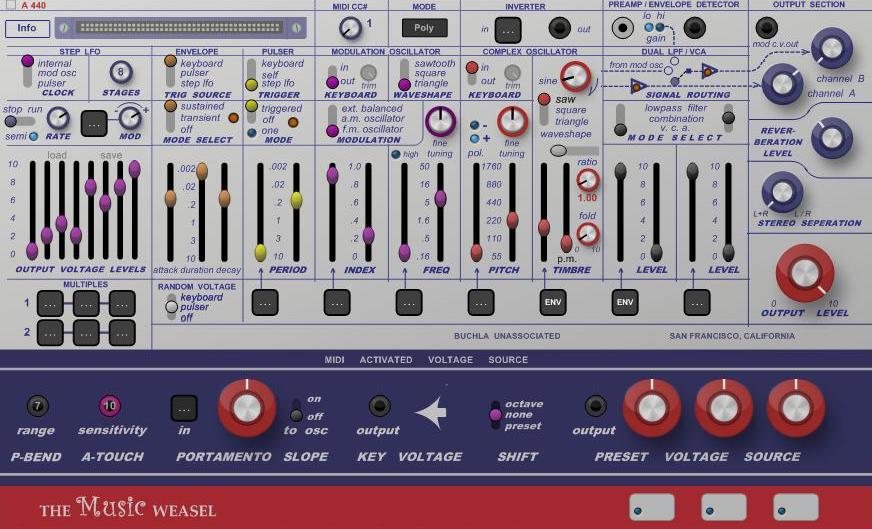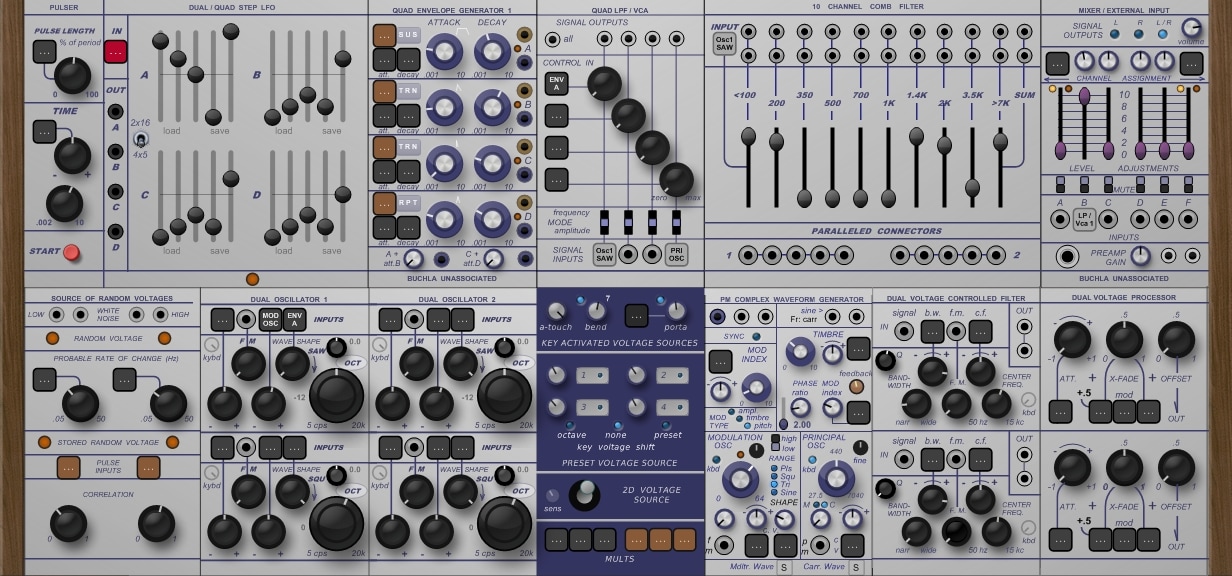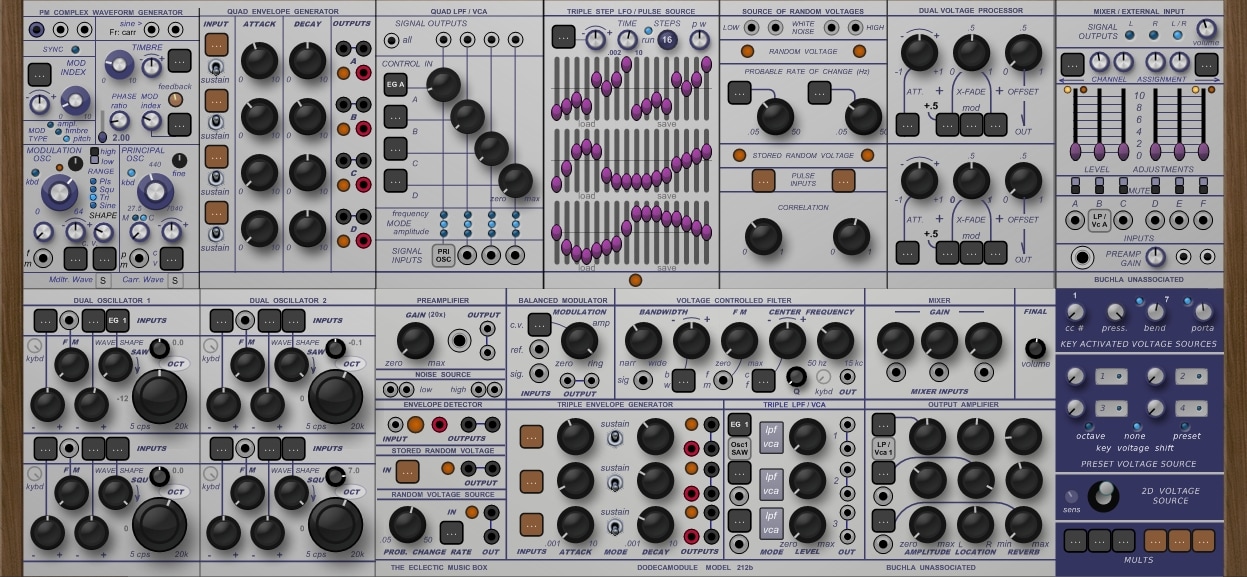Random tangent (but you all started it so it's not my fault

).
There are two "families" of modular synths. Because of where they originated, they are sometimes called East Coast and West Coast synthesis.
Moog is East Coast and is pretty much what we think of when we think about "analog synthesizers." Subtractive synthesis with resonant filters. It's obviously capable of so much more but many times our musical muscle memory gravitates toward the most common paths (VCO -> VCF -> VCA, with mod sources applied throughout). The VST modulars above aren't strictly East Coast but they certainly bias strongly in that direction. It's "that" sound, it's bread and butter for fans of synths, and it's lovely. I use it all over the place.
The other school is West Coast and is centered around Don Buchla and his weirdo synths. His philosophies were different from Moog's, with a very 60's California "music should be accessible to everyone regardless of training" mindset. His early synths explicitly omitted a piano-style keyboard because he felt that would restrict their accessibility to trained musicians. Morton Subotnick and Suzanne Ciani both did pretty amazing stuff with Buchlas though. There's much less emphasis on resonant filters with West Coast synthesis, instead the focus is on things like wavefolders and low pass gates. In some ways I feel like West Coast set the stage for FM synthesis later on with additive processes creating complex waveforms. He also did cool things like very musical random event generators.
I don't know of a ton of VST west coast options, although the Buchla Easel V from Arturia is one (the Easel is to his Buchla systems what the Minimoog was to the Moog Modular). IF you enjoy the more customizable experience with modular synths (even VST ones), I'd encourage you to seek out some west coast stuff as well. It's a nice stretch of the grey matter and can yield some pretty unexpected and cool results.
Just throwing my lame $0.02 into the party





 Reply With Quote
Reply With Quote


 Thanks as ever for sharing!
Thanks as ever for sharing!









Bookmarks